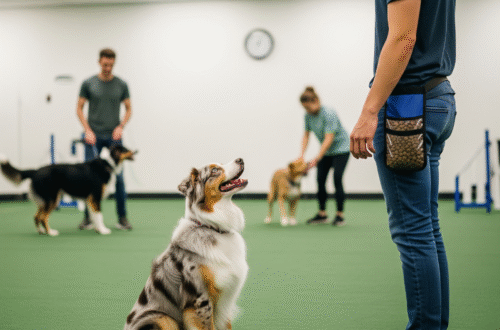Training your dog can be a rewarding journey filled with joyful moments and bonding experiences. But did you know that what goes into your dog’s bowl plays a pivotal role in their training success?
Just like athletes need the right fuel to perform at their best, dogs thrive on healthy food that supports their physical and mental well-being.
Choosing the right dog food is not just about filling up their dish; it’s about providing them with nutrients that enhance focus, energy, and overall health. Whether you’re working on basic obedience or advanced tricks, proper nutrition can make all the difference.
The Importance of a Healthy Diet for Dogs
A healthy diet is fundamental for any dog, impacting their energy levels and overall well-being. Nutrition affects everything from a dog’s coat to its mood. Poor eating habits can lead to various health issues, such as obesity or digestive problems.
Dogs need balanced meals that provide essential nutrients. Protein supports muscle development, while fats offer energy and promote healthy skin. Carbohydrates supply vital fiber for digestion.

Moreover, a nutritious diet enhances immune function and longevity. Dogs that eat well tend to recover faster from illness and maintain healthier weights throughout their lives.
Training also benefits significantly when dogs are properly nourished. A well-fed dog is more attentive and eager to learn during training sessions, making it easier for owners to teach new commands effectively.
Investing in quality food reflects directly on your pup’s performance and happiness.
What Makes a Dog Food Best?
When assessing the best dog food, it’s crucial to consider its nutritional balance. High-quality proteins should top the ingredient list, ensuring your pet receives essential amino acids for muscle maintenance and energy.
Look for whole grains or vegetables as sources of carbohydrates. These provide necessary fiber and sustain energy levels without causing spikes in blood sugar.
Healthy fats are also vital; they support skin health and a shiny coat while acting as an important energy source.
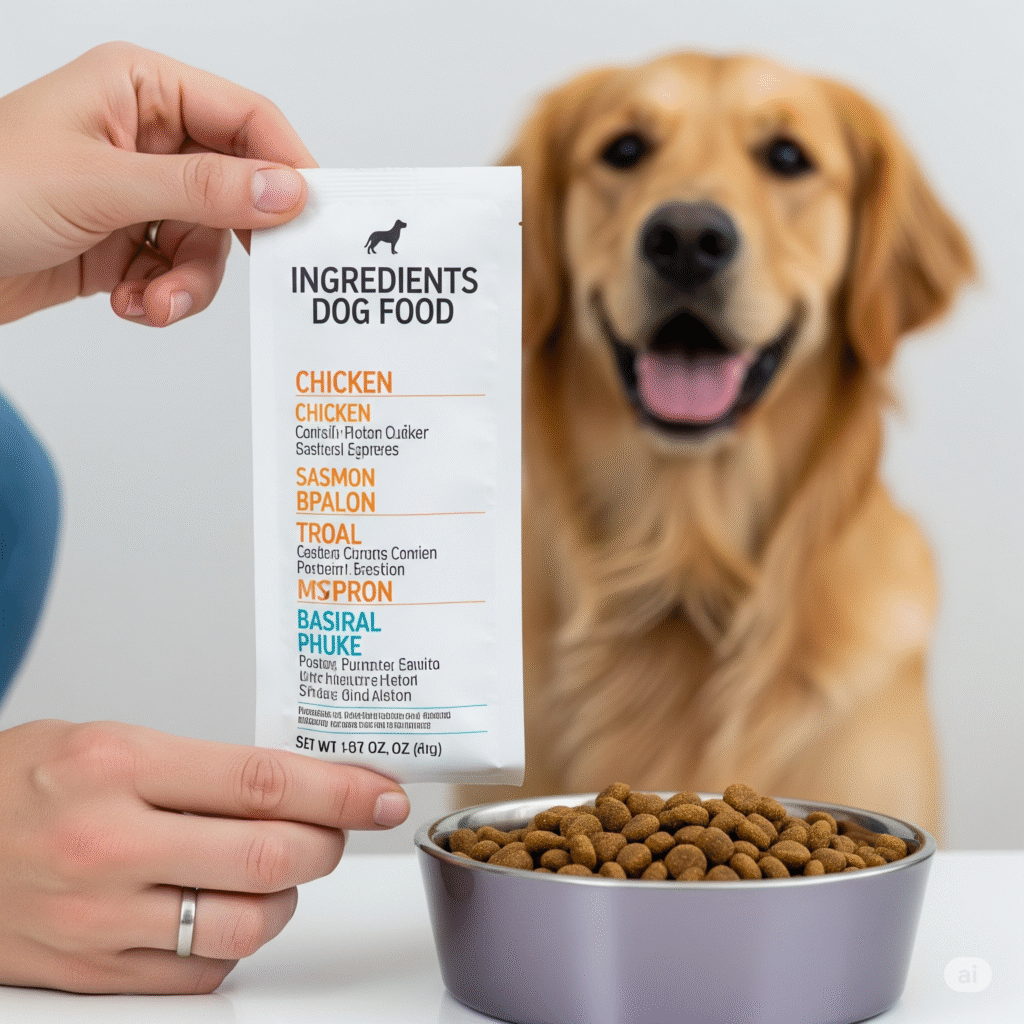
Avoid fillers like corn, soy, and artificial additives that offer little nutritional value. Instead, seek out natural ingredients with recognizable names.
Consider your dog’s unique needs age, breed and activity level all play a role in determining the ideal nutrition plan tailored just for them.
Top Ingredients to Look for in Dog Food
When choosing healthy dog food, understanding the ingredients is crucial. Look for high-quality protein sources like chicken, beef, or fish as the first ingredient. These provide essential amino acids that support muscle health.
Carbohydrates also play a vital role in your dog’s diet. Ingredients such as sweet potatoes and brown rice are excellent options for energy without causing digestive issues.
Don’t overlook fruits and vegetables. Blueberries, carrots, and spinach offer antioxidants and vitamins that boost immunity while keeping your pup’s coat shiny.
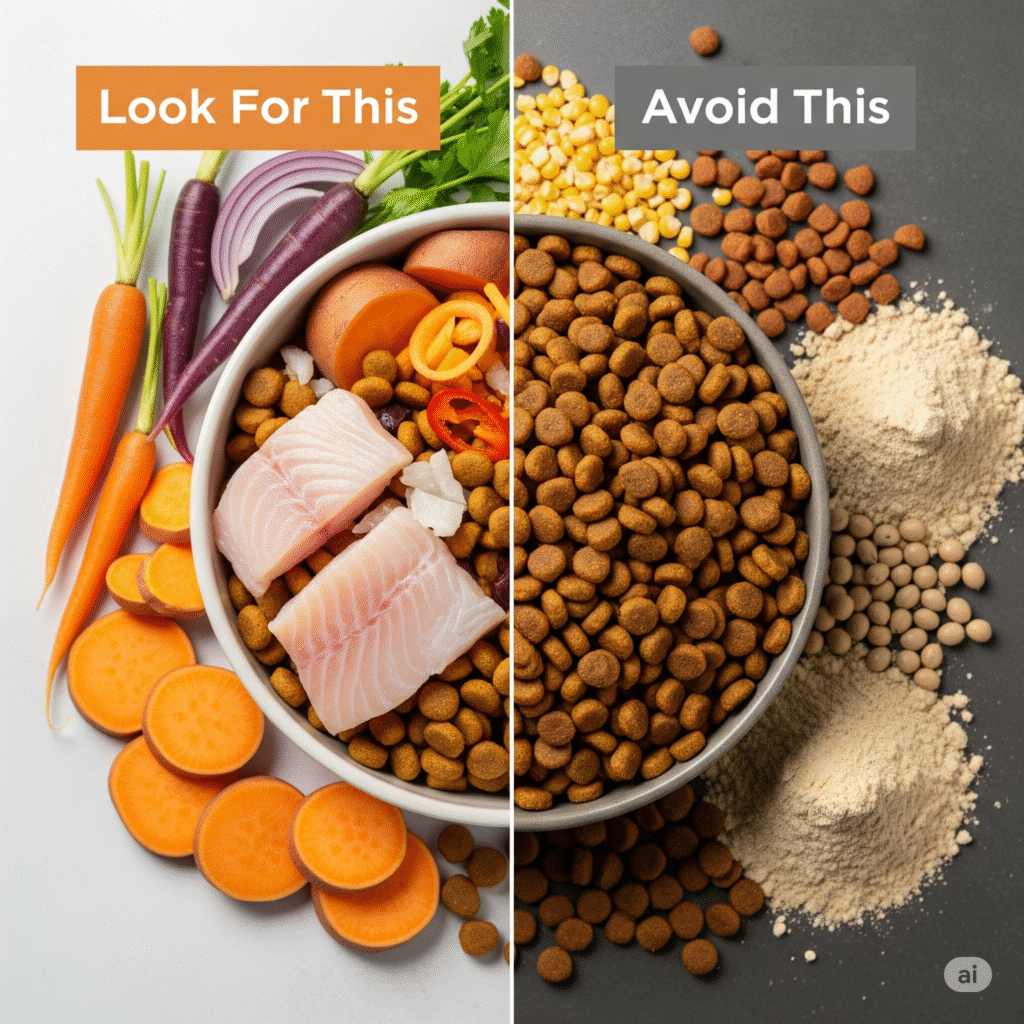
Healthy fats from sources like flaxseed oil or salmon oil contribute to brain function and skin health. Omega-3 fatty acids can make a noticeable difference in your dog’s overall well-being.
Avoid artificial additives whenever possible. Natural preservatives like tocopherols are better choices than synthetic ones found in many commercial products. This ensures you’re feeding them nutritious meals packed with wholesome goodness.
The Best Brands for Healthy Dog Food
When it comes to selecting the best dog food, several brands stand out for their commitment to quality and nutrition. Brands like Blue Buffalo focus on using real meat as the first ingredient, ensuring your pup gets a protein-rich diet.
Orijen is another top choice. They pride themselves on offering biologically appropriate recipes packed with fresh ingredients sourced from local farms. Their formulas often include a mix of meats, fruits, and vegetables that mimic what dogs would naturally consume.
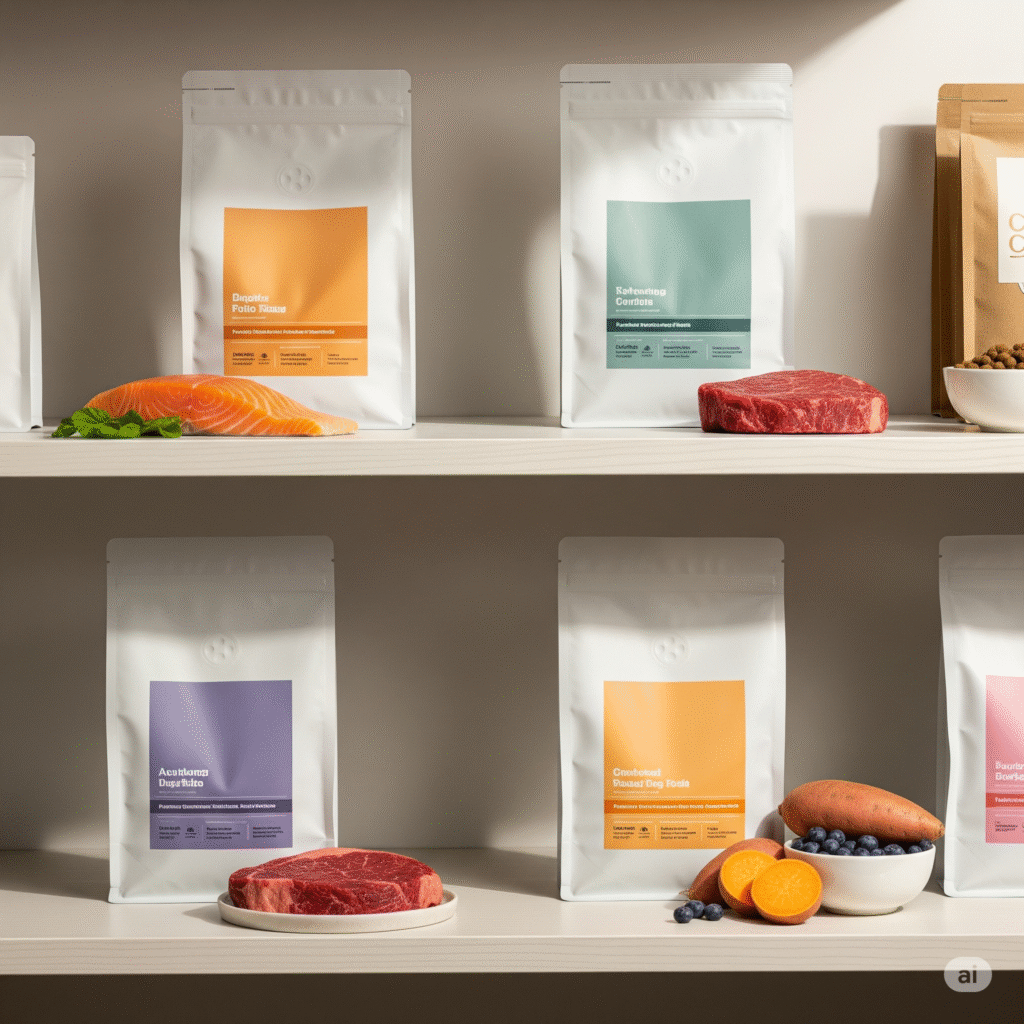
Wellness Core stands out for its grain-free options, providing high-protein meals tailored for active dogs. This brand emphasizes whole foods without fillers or artificial additives.
Merrick offers an array of recipes featuring real Texas beef or chicken. They’re known for their high-quality standards and diverse flavor choices that can keep even picky eaters satisfied.
Each brand brings unique elements to the table while prioritizing your dog’s health and well-being.
How Proper Nutrition Enhances the Effectiveness of Training?
Proper nutrition plays a pivotal role in shaping your dog’s training success. A balanced diet fuels their energy levels, ensuring they can engage fully during each session.
When dogs consume high-quality ingredients, they experience improved focus and motivation. Nutrients from healthy dog food contribute to brain function, making it easier for them to absorb commands and learn new tricks.
Moreover, adequate protein supports muscle development and recovery. This is especially important after intense training sessions when your dog needs the energy to bounce back quickly.

Healthy fats also play a significant role; they provide sustained energy without causing spikes or crashes that could hinder performance.
Hydration cannot be overlooked. Adequate water intake supports overall health and enhances cognitive abilities during training exercises. The right nutrition truly makes a difference in how effectively your dog learns and retains skills over time.
Homemade vs. Store-Bought Dog Food: Which is Better?
Choosing between homemade and store-bought dog food can be a tough decision for pet owners. Each option has its own set of advantages.
Homemade dog food allows you to control the ingredients. You know exactly what your furry friend is eating, which can be crucial for dogs with allergies or sensitivities.
Plus, cooking at home opens up the possibility of using fresh, high-quality ingredients. On the other hand, store-bought dog food offers convenience and consistency.
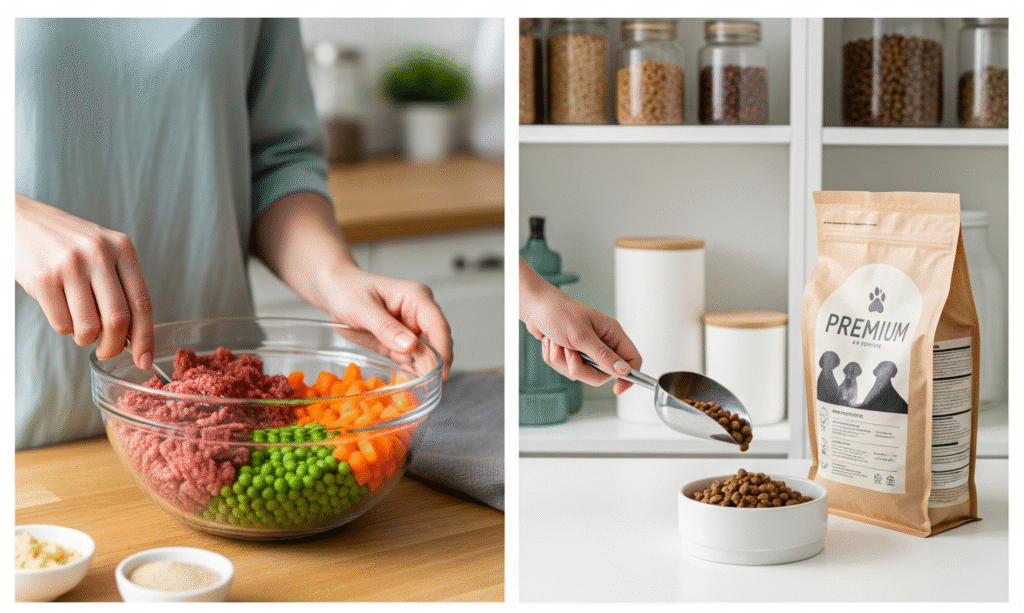
Many reputable brands invest in research to ensure their products meet nutritional standards. This makes it easier to find balanced meals tailored for various life stages and health needs.
It may come down to personal preference and lifestyle factors. Some pet owners even choose a mix of both methods to provide variety while ensuring proper nutrition for their dogs.
Tips for Transitioning Your Dog to a New Diet
Transitioning your dog to a new diet can be a smooth process with the right approach. Start by mixing small amounts of the new food with their current diet. Gradually increase the proportion of new food over several days.
Monitor your dog’s reaction closely. Look for any signs of digestive upset, such as diarrhea or vomiting, and adjust accordingly. If issues arise, slow down the transition pace.
Consistency is key. Stick to regular feeding times and avoid giving treats that could disrupt their digestion during this period. Be patient; some dogs may take longer than others to adapt to changes in their meals.

Offer plenty of praise and encouragement during mealtime to create positive associations with the new food choice! A happy dog makes for easier transitions all around.
Common Mistakes to Avoid When Choosing Dog Food
Choosing the right dog food can be overwhelming. Many pet owners make common mistakes that could affect their dog’s health and training.
One frequent error is ignoring ingredient lists. It’s essential to look beyond flashy packaging and marketing claims. Focus on quality ingredients instead.
Another pitfall is not considering your dog’s specific needs. Different breeds, ages, and activity levels require tailored nutrition. A one-size-fits-all approach doesn’t work here.
Also, many people underestimate the importance of avoiding fillers and artificial additives. These substances may seem harmless but can lead to long-term health issues.
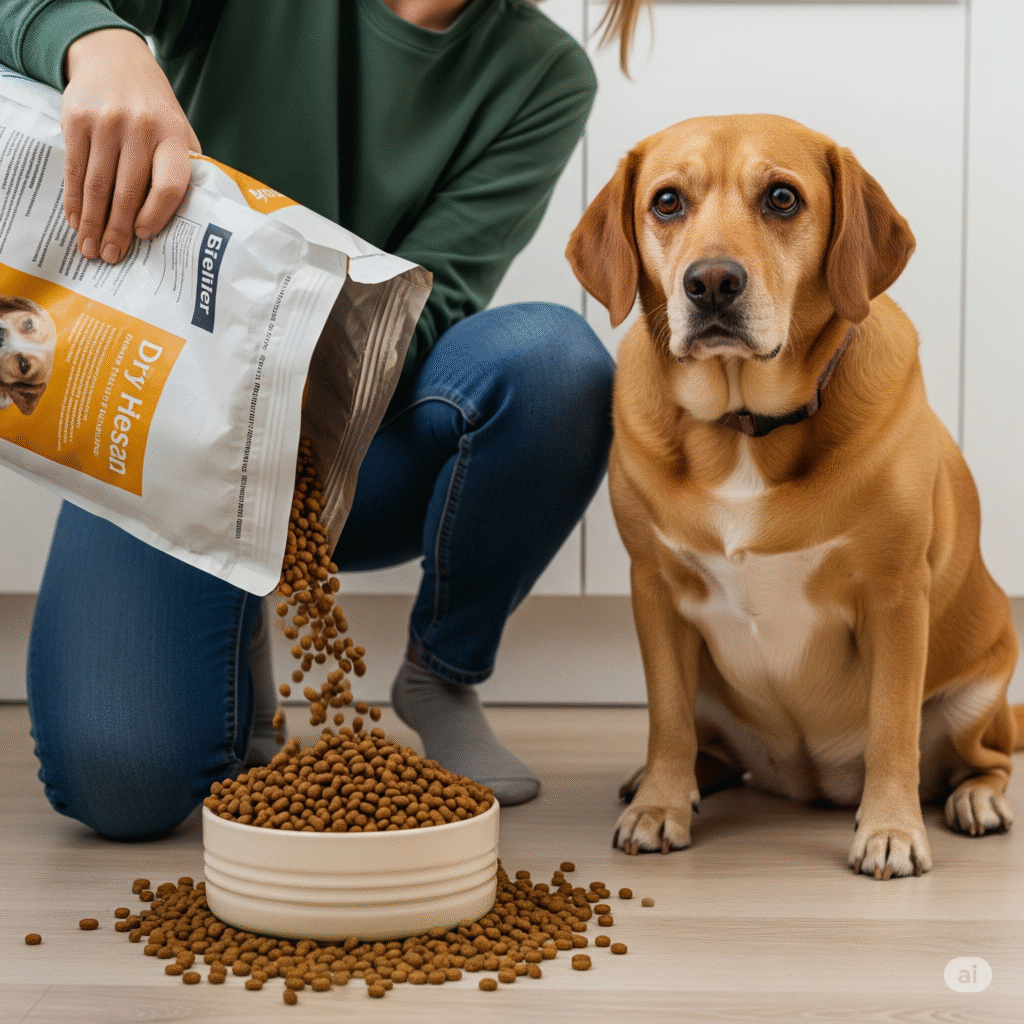
Sometimes, pet owners overlook proper feeding guidelines too. Portion sizes vary based on a dog’s weight and energy output—following recommendations ensures your pup stays fit.
Don’t forget to check for allergens or sensitivities in your dog before selecting food options; this will help prevent digestive disturbances or allergic reactions down the line.
Frequently Asked Questions about Healthy Dog Food
What should I look for when choosing healthy dog food?
Look for high-quality protein sources, whole grains, and vegetables. Avoid fillers like corn and artificial preservatives. The best dog food will have real meat as the first ingredient.
Can I give my dog treats while training?
Absolutely! Healthy treats can reinforce positive behavior during training sessions. Just ensure they are low-calorie and made from quality ingredients to keep your pup on track with their diet.
How do I know if a specific brand is reputable?
Research the brand’s history, read reviews and check if they adhere to AAFCO guidelines. Brands that invest in transparency about sourcing and manufacturing practices are generally more reliable.
Conclusion:
Choosing the right dog food plays a crucial role in your training success. A healthy diet fuels your dog’s energy levels, enhances focus, and supports overall well-being.
Understanding what makes the best dog food involves looking at top ingredients that promote health and vitality. Brands committed to quality often prioritize natural ingredients over fillers.
This not only benefits your furry friend but also improves their responsiveness during training sessions. The choice between homemade versus store-bought options has its merits, both can be excellent depending on how they are prepared.
Healthy feeding habits support more than just physical strength; they create a foundation for effective learning and bonding with your pet. Prioritize their diet today for a happier, healthier companion tomorrow.




